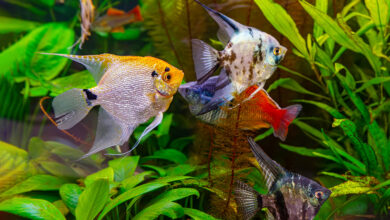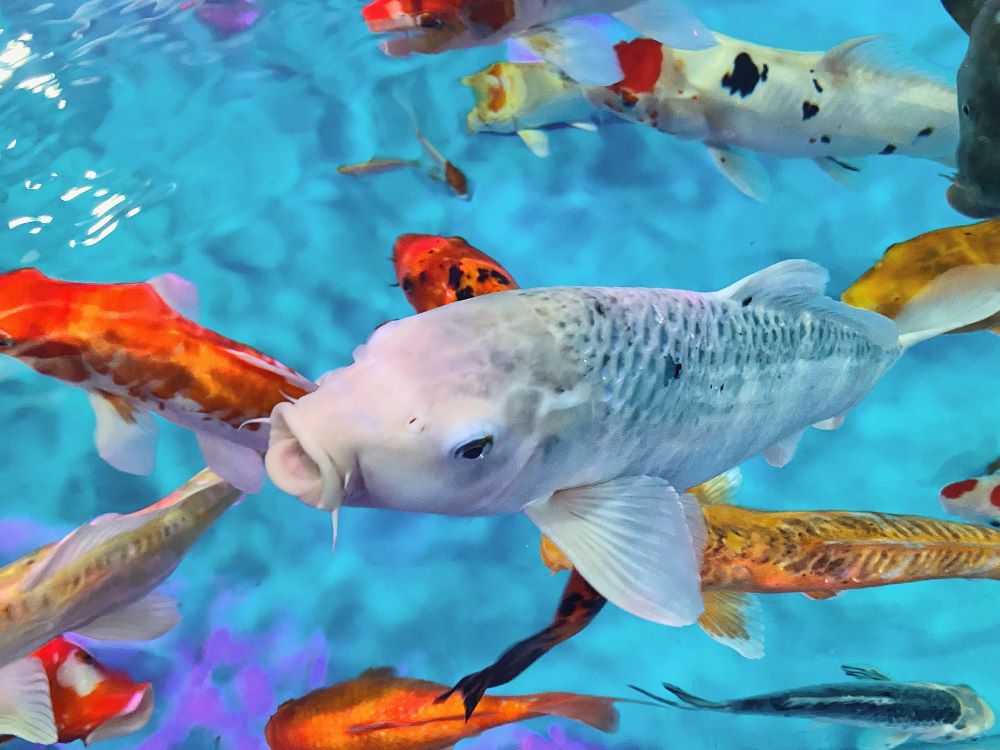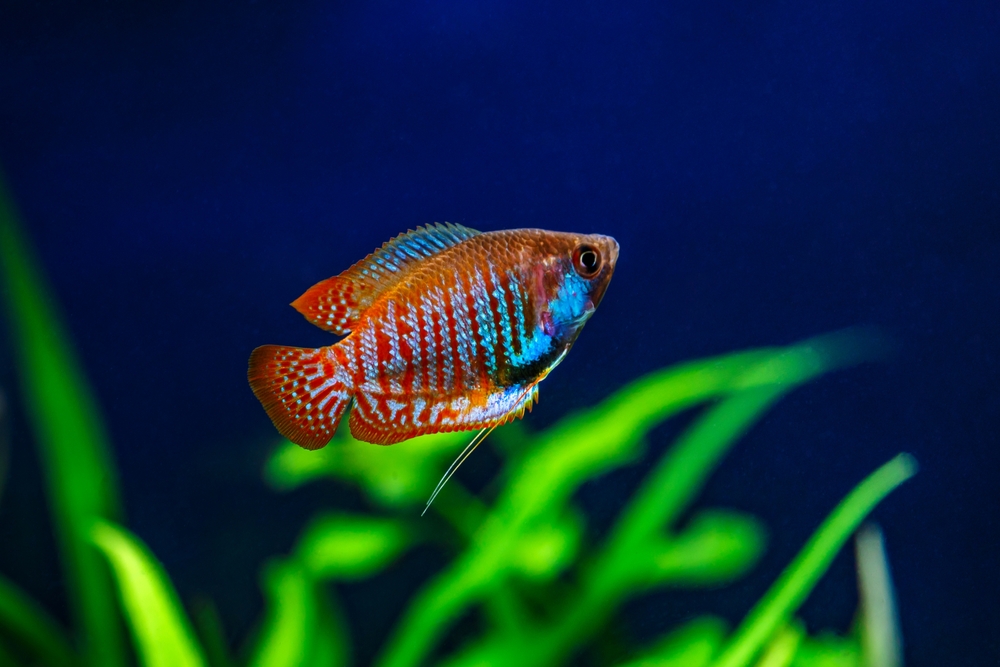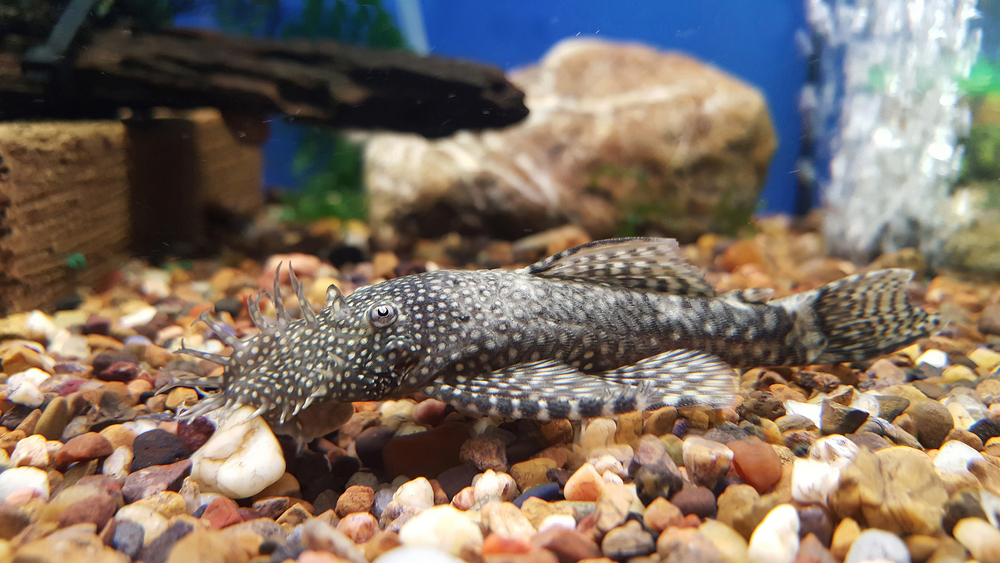15+ Popular Fish With Whiskers
When you purchase through links on our site, we may earn a commission. Here’s how it works.
Hey there, catfish connoisseurs!
When you think of catfish, you probably picture a bottom-dwelling creature with a big head and whiskers, right? Well, guess what? There are tons of different fish that share these cool characteristics.
Table of Contents
Believe it or not, there are hundreds and hundreds of catfish species worldwide. And the best part? Many of them are perfect for your aquarium—no headaches, no hassle. These are the friendly, easygoing catfish we’re excited to showcase.
If you’ve been dreaming about keeping fish with whiskers or pets that look like catfish but aren’t as large (or as grumpy), you’re in the right place. This is the perfect spot to start your search for those whiskered wonders!
So, let’s dive in and find the ideal catfish for your tank.
Fish With Whiskers
Other similar posts:
1. Otocinclus
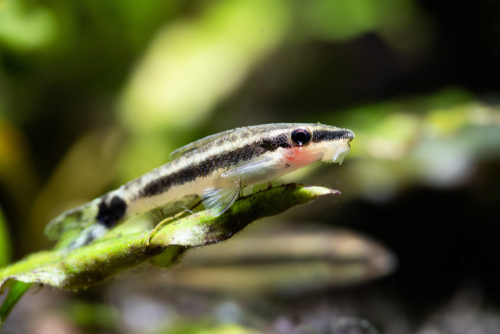
Sometimes called a dwarf sucker fish, this tiny little catfish is a huge favorite amongst the home aquarium community – and for good reason.
Growing to be only about 2 inches long, they look a lot like traditional catfish that have shrunk significantly but they play a huge part in keeping your tank clean and your tank water healthy.
Spending the entirety of their day (or almost the entirety of their waking hours) cruising around your tank, they scavenge for food – and love to eat as much algae as they come across.
This is going to keep your tank environment much cleaner and much healthier without you having to put in a ton of chemicals or run a lot of expensive equipment.
Best of all, because these catfish are so small you can add them to pretty much any underwater enclosure without worrying about squeezing other fish. They do best in at least 10 gallons of water, but won’t get “lost” in bigger tanks, either.
2. Upside Down Catfish
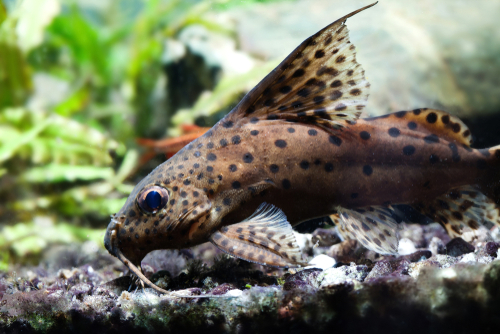
This is a quirky little catfish that you’re going to want to keep your eye on, especially if you are new to the aquarium keeping community.
You see, a lot of people that add this fish to their tank without realizing what its name really means are stunned to discover that their fish flips upside down almost immediately – and then they think there’s something wrong with their fish or (worse) that it’s already passed away.
Nothing could be further from the truth!
No, this fish got its name because it spends the majority of its time swimming upside down with its belly pointing towards the surface of the water in your tank.
These catfish get to be about 3 or 4 inches in size, have beautiful spotted bodies, and can be added to tanks of at least 30 gallons or larger without much headache or hassle whatsoever.
3. Twig Catfish

Twig catfish love to spend their time in your aquarium hiding amongst your underwater plants and structure, disappearing almost completely thanks to their unique twig-like body.
Even those that spend a lot of time watching these kinds of catfish move throughout their underwater enclosure lose them in and amongst their plant life more often than not. That’s just how good their natural camouflage is.
Don’t be surprised if these catfish grow to lengths of 6 inches or longer when they are fully matured.
You will need to be a little more careful with your water conditions when raising these kinds of catfish, though. They like water temperatures of between 73° and 76°F and a pH balance right in the middle of 6.5 and 7.5.
4. Tiger Shovelnose Catfish
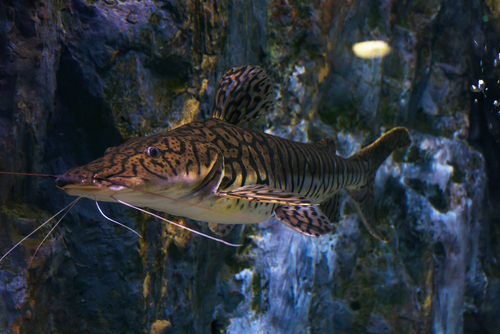
While most of the catfish on this list can be kept in a home aquarium environment without too much effort, these catfish – the tiger shovel no catfish – require a bit of an expert touch.
For starters, these catfish can get to lengths of between 2.5 and 3 feet with some real regularity. That means they’re going to need at least 250 gallons of space, the kind of aquarium that most people just don’t have set up in their living room.
On top of that, these catfish need to have a very specifically dialed in diet that requires a bit more of a “hands-on” approach to feeding than other catfish on this list.
They love to eat small fish, they love to eat crawfish, and while they’ll eat worms and large pellets in captivity (if they’ve been trained from a young age to do so) you’ll usually have better luck feeding them chunks of raw fish.
5. Bumblebee Catfish
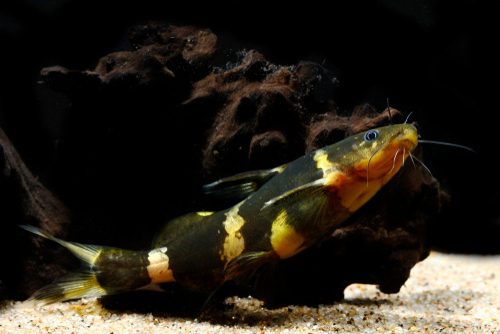
At the opposite end of the spectrum as far as ease of keeping is concerned is the bumblebee catfish, one of the simplest and most straightforward catfish you can keep in your tank.
These fish generally only grow to be about 3 inches in length and really do well in smaller to medium-sized aquarium enclosures. We are talking about 20 gallon tanks here. That’s more than enough room for them to roam!
These catfish get their name from their bumblebee-like stripes as well as their bright, almost radiant yellow color. Some bumblebee catfish have a bit of a dollar shade of tan and brown to them instead of rich black stripes, but it still looks fantastic in your tank.
Just remember to keep water temperatures between 70°F and 77°F and you won’t have much to worry about!
6. Pictus Catfish

A light gray catfish with incredibly long barbells, these little beauties are fantastic additions into tanks with other types of fish. They get along with pretty much everybody (so long as they are similarly sized) and can thrive in a whole host of water conditions.
7. Striped Raphael Catfish
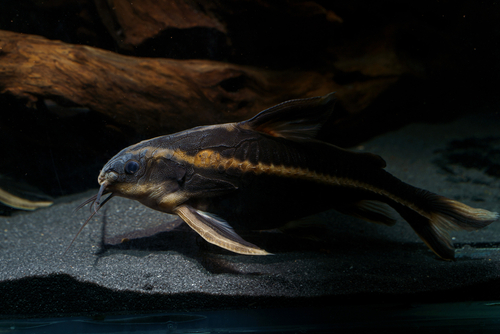
As dramatic a catfish as you’re going to find to add to your aquarium these days, the striped Raphael catfish are known to put on a bit of a show every time they spot an audience.
These catfish (like most others) like to stay in the lower half of the water column, but will bounce up, play with other fish, and aren’t afraid to “stretch their legs” so to speak.
Just remember that these fish can get pretty large. We are talking about 9.5 inches and sometimes longer than that. A 50 gallon tank is critical.
8. Glass Catfish
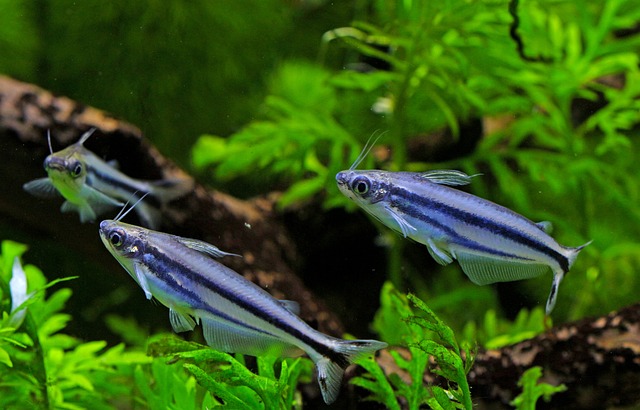
These catfish got their name from their transparent and translucent skin, giving you a look at individual bones and even organs – making them perfect for those that want to spend a little more time studying fish they have in their enclosure.
Glass catfish can get to be anywhere between 4 and 6 inches long, so you’ll need a halfway decent sized tank to keep them happy and healthy. They do really – REALLY – well in smaller schools (at least five), so consider that when you’re investing in them.
9. Gold Nugget Pleco
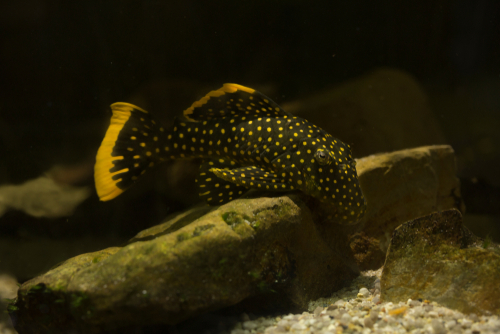
Easily one of the most popular catfish to keep in a freshwater aquarium, the odds are pretty good you’ve seen a gold nugget before.
These fish have a beautiful black base color with gold polkadots all over, finished off by thick yellow stripes on both their dorsal and caudal fin. They bring a lot of vibrance to any tank enclosure they’ve been added to.
10. Cory Catfish
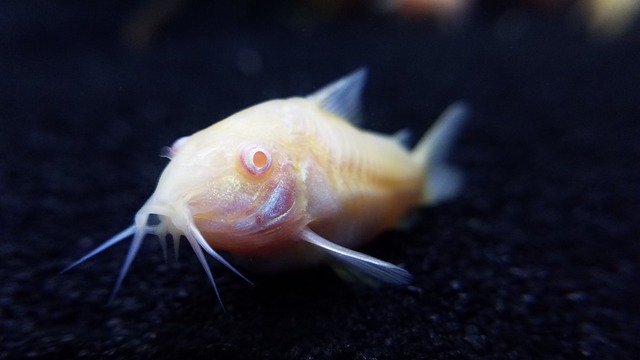
These catfish have an almost unlimited amount of colors (with 165 sub species), giving you an opportunity to pick and choose exactly the kind of cory catfish you want to add to your enclosure.
Super hardy, these catfish are about as easy to take care of as it gets. They don’t grow to be very large, either, which means you’ll be able to add a number of them to a 50 gallons tank with no real issue.
11. Redtail Catfish
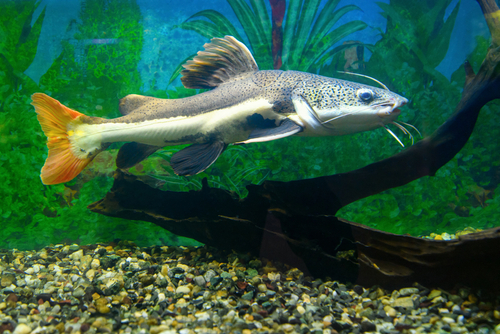
Another catfish species that only seasoned veterans of the aquarium world are going to want to attempt to keep, this is easily one of the most demanding catfish species out there.
This fish can reach lengths approaching 4 feet pretty consistently and lead very active lifestyles. These catfish are so active, in fact, that most recommend you have a 2000 gallons enclosure for them to feel really comfortable in.
They are big, beautiful, and sometimes a little bit on the aggressive side of things. That makes for a very lively aquarium environment!
12. Clown Pleco
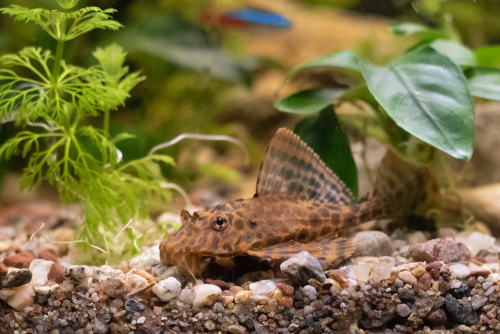
Found primarily in Venezuela as well as Columbia, clown catfish are tiny (growing to be about 4 inches or so) but have the same kind of look and aesthetic a more traditional catfish might.
We are talking about a larger head, the downturned mouth, and an oversized dorsal fin just like the kind of catfish you find in the Mississippi River.
If you’re going to keep this fish in an aquarium make sure that you have plenty of structure for them. They love (absolutely love) to snack on algae that grows on driftwood, but also use that driftwood structure to protect them when they are feeling nervous or dressed out.
13. Bristlenose Pleco

This is a fantastic catfish species you’ll want to think about adding to your freshwater enclosure to help keep algae levels low without you having to lift a finger of your own to do so.
A catfish that loves to munch on algae pretty much nonstop, the downturned mouth of this fish allows it to get great suction. That’s perfect for pulling algae off of your tank as well as any of the plants or structures you’ve added into the mix, too.
Make sure you have at least 25 gallons of water for this catfish, though.
14. Chinese Algae Eater

The Chinese algae eater catfish has a bit of a negative reputation amongst newbie aquarium keepers. A lot of people feel that it is particularly aggressive and territorial.
That might be true, but most veterans of the aquarium space understand that most of this has to do with these fish feeling closed in, crowded, and overly stressed out.
It’s important to remember that this fish can grow to be up to 11 inches long. That means they need at least 30 gallons to feel comfortable, and if there are more fish in the aquarium they’ll need even more space than that.
Give them more room and watch their behavior issues ironed out almost automatically!
15. Mandarinfish
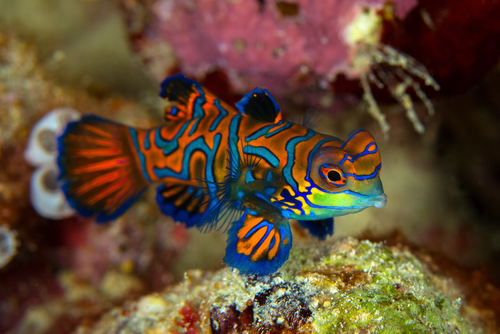
The Mandarinfish is a small, brightly-colored fish that is native to the coral reefs of the Indo-Pacific region. As its name suggests, the Mandarinfish is closely related to the Mandarinfish (genusSynchiropus), and it shares many of the same features, including a long, slender body and a protruding snout.
Unlike its cousin, however, the Mandarinfish is not scaleless, and its body is covered in small, sharp scales.
The Mandarinfish is also distinguished by its diet; while Mandarinfish feed primarily on algae, Mandarinfish are carnivores, and their diet consists mainly of small invertebrates. In addition to its unique diet, the Mandarinfish is also known for its vibrant coloration.
The body of the fish is orange or red, with blue spots on the head and fins. This bright coloration serves as a warning to predators, as the Mandatoryfish contains a toxic chemical that can be harmful to larger animals.
Despite its toxicity, however, the Mandarinfish is a popular aquarium fish, and it is prized for its beauty and rarity.
16. Gobies
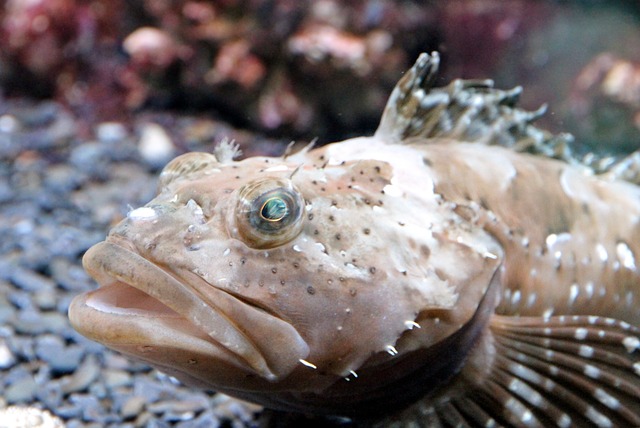
The Goby fish is a small, freshwater fish that is native to Asia. It is most commonly found in rivers and streams, although it can also be found in ponds and lakes.
The Goby fish is easily recognized by its unique appearance; it has a long, slender body with a flattened head and large eyes. The Goby fish is a bottom-dweller, meaning that it spends most of its time near the bottom of the water column.
This is where it finds most of its food, which consists of small invertebrates such as insects and larvae. The Goby fish has a streamlined body that helps it to move quickly through the water.
It also has two pairs of barbels on its head, which it uses to help locate food. The Goby fish is a popular aquarium fish, and it is also sometimes used as bait for larger fish.
17. Cardinal Fish

The cardinal fish is an eye-catching freshwater fish that is native to South America. Its distinguishing features include its red coloration and long barbels that resemble catfish whiskers.
Cardinal fish are relatively peaceful creatures that can be kept in pairs or small groups in a community aquarium.
They are omnivorous, so their diet should include both plant matter and live or frozen foods such as brine shrimp and bloodworms. With proper care, cardinal fish can be a beautiful and low-maintenance addition to any aquarium.
18. Loaches
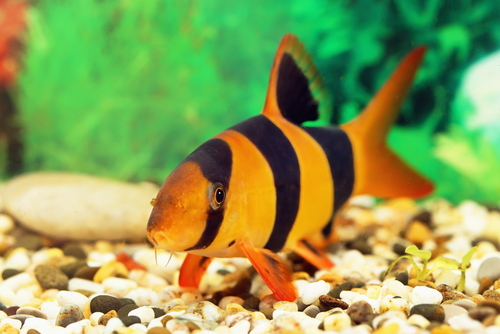
The Loaches fish is a freshwater fish that is native to East Asia. It is a popular aquarium fish and can grow up to 12 inches in length. The Loaches fish has a brown or olive-colored body with black spots.
It has a long, slender head with small eyes. The Loaches fish is a bottom-dweller and feeds on small insects, crustaceans, and worms.
It is a peaceful fish but can be aggressive towards other bottom-dwellers. The Loaches fish is known for its resemblance to a catfish. It has the same long, slender body and whiskers.
However, the Loaches fish does not have the barbels that are characteristic of catfish. The Loaches fish is a popular aquarium fish because of its peaceful nature and unique appearance.
19. Mudskippers
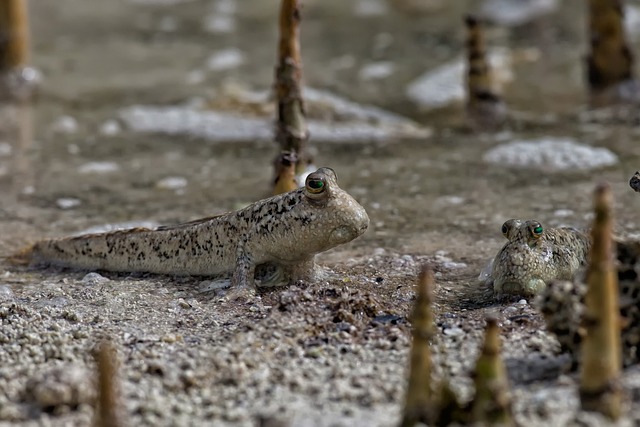
The Mudskipper is a fish that has both aquatic and terrestrial capabilities. It has a long body and tail with fins that help it move through the mud and water.
The Mudskipper is an opportunistic feeder and will consume just about anything it can fit in its mouth including small fish, insects, and worms.
One of the most interesting things about the Mudskipper is its ability to breathe air. It does this by pulling oxygen from the air and using its gills to exchange it for carbon dioxide.
The Mudskipper is also able to climb trees and other objects out of the water. When it dries out, the Mudskipper will often seek shade to prevent desiccation. The Mudskipper is an amazing fish that has both catfish and reptilian qualities.
20. Asian Stone Catfish
Easily one of the smallest aquarium catfish you could ever get your hands on, these fish generally only grow to be an inch or so in length as adults (sometimes getting to be as big as 1.5 inches) – but have a ton of personality.
Traditionally found in slower moving waterways (especially small streams) throughout India, these fish do well in tanks that have water temperatures of between 74°F and 75°F. The pH balance of tank water needs to be between 5.6 and 7.6 for them to thrive, too.
Don’t be surprised if these little showstoppers quickly become the main attraction in your aquarium.
As we highlighted a moment ago, they have a lot of personality but they also have a unique “catfish on steroids” kind of look. They have larger fins, super long barbells, and a very unique colorway.
Closing Thoughts
At the end of the day, adding catfish to your aquarium cannot only add a lot of spice and a lot of personality into the mix – but it can also add fish that are going to “pull their own weight”, helping you to keep the tank clean and the water healthy.
Some catfish are easier to take care of than others, though.
Make sure you know what you’re getting into before you add these fish to your underwater environment.
Frequently Asked Questions
Can you keep catfish in a home aquarium?
You bet you can! With hundreds of different catfish species out there you’ll have plenty of opportunity to pick and choose the right ones for your underwater enclosure.
How hardy are catfish when kept as pets?
The overwhelming majority of catfish species are very hardy, especially those that can be reliably kept in freshwater aquariums. Just make sure that water conditions are dialed in and you are good to go.
Can you keep multiple types of catfish together in the same enclosure?
As long as catfish have enough room to feel comfortable, enough room to roam and exercise, and plenty of structure to dive into if they are feeling threatened you don’t have much to worry about mixing different catfish together.
Steer clear of those that have known territorial or aggressive personalities and you’ll have little to worry about.
